Techniques and Challenges in Bulkhead Erosion Control
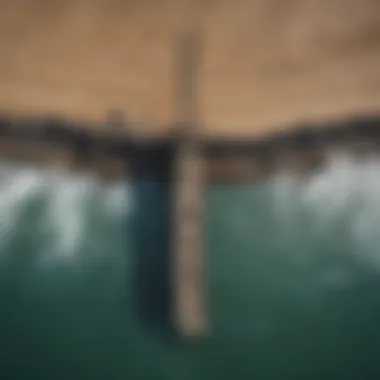
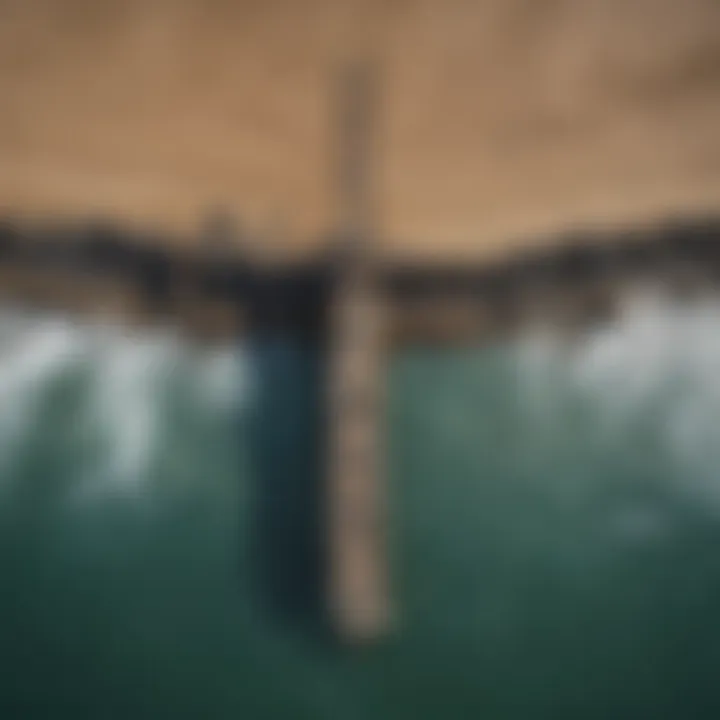
Overview of the Topic
Bulkheads are crucial in maintaining the integrity of coastal areas, acting as barriers to prevent erosion caused by waves, tides, and storm surges. They serve a vital role in protecting both natural and built environments from the relentless forces of nature. The increasing frequency of severe weather events due to climate change has made understanding bulkhead erosion control more essential than ever.
Erosion affects shorelines, altering landscapes, habitats, and human settlements. As erosion encroaches on coastlines, it compromises infrastructure, reduces land availability, and disrupts ecosystems. This challenge highlights the need for effective bulkhead design and construction techniques that not only address immediate concerns but also promote long-term sustainability.
Background Information
Historically, bulkheads have been utilized to safeguard coastal infrastructure and property. However, the implementation of bulkheads is not without its complications. Poorly designed or constructed bulkheads can exacerbate erosion in surrounding areas, leading to unintended consequences. As such, understanding the interplay between bulkhead design, coastal dynamics, and environmental impact is crucial for balancing protection and ecological health.
Current Status and Challenges
Across the globe, many coastal regions are grappling with the dual challenges of rising sea levels and increased erosion rates. The current state of many bulkheads reflects outdated practices and materials, which often fall short of meeting modern environmental standards. Some challenges facing bulkhead erosion control include:
- Material Durability: Many older bulkheads are constructed using materials that are susceptible to corrosion and degradation over time.
- Environmental Impact: Conventional bulkhead constructions may disrupt local habitats, affecting marine and terrestrial life.
- Cost: Financial constraints can limit the adoption of more sustainable and effective designs.
A significant concern is the potential for bulkheads to drive erosion further down the beach, causing loss in other areas. Notably, some projects have inadvertently led to long-term damage to adjacent shorelines.
Sustainable Solutions
To mitigate these issues, the exploration of sustainable bulkhead designs has become paramount. Some effective solutions include:
- Living Shorelines: Incorporating natural elements like vegetation and rock installations promotes biodiversity while providing erosion control.
- Modular Systems: Flexible, modular designs can adapt to changing environmental conditions more effectively than rigid structures.
- Innovative Materials: Utilizing sustainable materials that withstand environmental stressors can enhance the lifespan of bulkheads.
Successful case studies highlight these practices: for instance, projects along the Atlantic Coast show how integrating natural habitats with hardened structures can yield positive results. These methods demonstrate a balance between protecting infrastructure and fostering ecosystem resilience.
Impact and Importance
The implications of effective bulkhead erosion control extend beyond immediate shoreline protection. Healthy coastlines support biodiversity, promote recreational activities, and serve as buffers against storms. By employing sustainable methods, we not only protect current ecosystems but also lay the groundwork for future generations.
Applying sound conservation practices fosters community engagement and stewardship, as locals have a vested interest in maintaining coastal health. As the saying goes, "A stitch in time saves nine;" proactive measures in bulkhead design can prevent more significant issues down the line.
Effective bulkhead erosion control is not just about walls and barriers; it’s fundamentally about harmony with nature and preserving the delicate balance of coastal environments.
Prelims to Bulkhead Erosion Control
Bulkhead erosion control is a pivotal component in managing coastal landscapes. As sea levels rise and climate change wreaks havoc on shorelines, understanding this topic becomes urgent. Perched at the edge of land and water, bulkheads serve both as barriers against erosion and as structures that need careful consideration in their design and placement. The effectiveness of these measures directly relates to their alignment with natural processes and human needs.
In a world where coastal ecosystems are under siege from development, pollution, and natural forces, bulkheading is more than a technical endeavor; it's an embodiment of balancing human interests with environmental stewardship. This area of study transcends mere construction techniques and dives into ecological, economic, and social implications. By examining bulkhead erosion control, one uncovers a myriad of benefits, from protecting property to maintaining biodiversity.
Definition and Purpose
To better grasp the nuances of bulkhead erosion control, it's essential to first define what it encompasses. A bulkhead is a structure built along shorelines—primarily made of materials like wood, concrete, or steel—designed to prevent land erosion and to manage water levels. The purpose of these structures extends beyond protecting the land; they are also engineered to stabilize the coastline against wave action and tidal forces.
Main purposes of bulkheads include:
- Erosion prevention: Stops further land loss due to wave action or tidal influences.
- Flood mitigation: Acts as a barrier against storm surges and high tides.
- Access: Provides safe pathways for recreational activities along shorelines.
The installation of an appropriate bulkhead can be a lifeline for vulnerable coastal communities, ensuring they remain resilient in the face of worsening climate conditions.
Historical Context and Development
The evolution of bulkhead erosion control harkens back centuries to when coastal inhabitants first noticed the impact of ocean waves and storms on their land. Originally crafted from wood and stone, these structures were rudimentary yet functional, focusing solely on protection. However, as societies advanced and industrialization surged, so too did the technology behind bulkhead design.
In the early 20th century, municipalities began investing more heavily in bulkhead projects, motivated by an increase in urban development near coastal areas. Engineers experimented with various materials and designs—moving from simple wooden structures to more durable options like steel and reinforced concrete.
As urban areas expanded, the realization of the environmental impact of such constructions became evident, igniting discussions on sustainability and ecological integrity. Today, the focus is not just on controlling erosion but also on how these structures interact with coastal ecosystems, reflecting the growing awareness that all construction must consider long-term environmental health.
Understanding past developments informs current practices, as professionals in the field look to learn from previous successes and failures. The role bulkheads play—and will continue to play—tells the story of humanity's struggle against nature and our quest for harmony with it.
"A bulkhead isn’t just a structure; it’s a witness to time—a dynamic interplay between land and sea."
Through careful examination of both the historical context and its definition, one can appreciate the depth and complexity of bulkhead erosion control, setting the stage for deeper exploration into the techniques and challenges that lie ahead.
Erosion Dynamics and Coastal Processes
Understanding erosion dynamics and coastal processes is fundamental to effective bulkhead erosion control. The interplay between natural and anthropogenic factors can either exacerbate or mitigate erosion. Coastal erosion is not a mere aesthetic problem; it can lead to significant property loss, loss of habitat, and changes in water quality. Addressing these dynamics is crucial for ensuring the resilience of coastal areas.
Understanding Coastal Erosion
Coastal erosion refers to the gradual loss of land along shorelines, often due to the persistent force of waves, currents, and tidal surges. It's an ongoing battle, where nature seeks to reshape the coastline while humans work to maintain it. The rate at which this erosion occurs is influenced by a variety of factors, including the geology of the coastline, the vegetation present, and the human activities taking place nearby.
The impacts of coastal erosion can be profound. They include the loss of beaches, cliffs, and artificial structures. The challenge lies in managing these changes to preserve both natural ecosystems and built environments. Because erosion is a natural process, understanding its patterns is key to developing strategies to mitigate its effects.
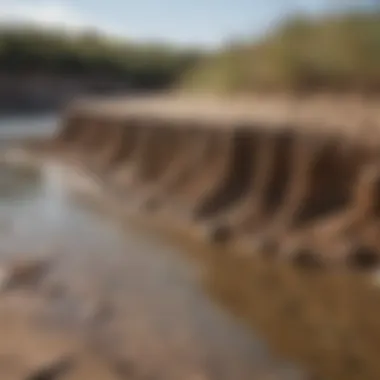
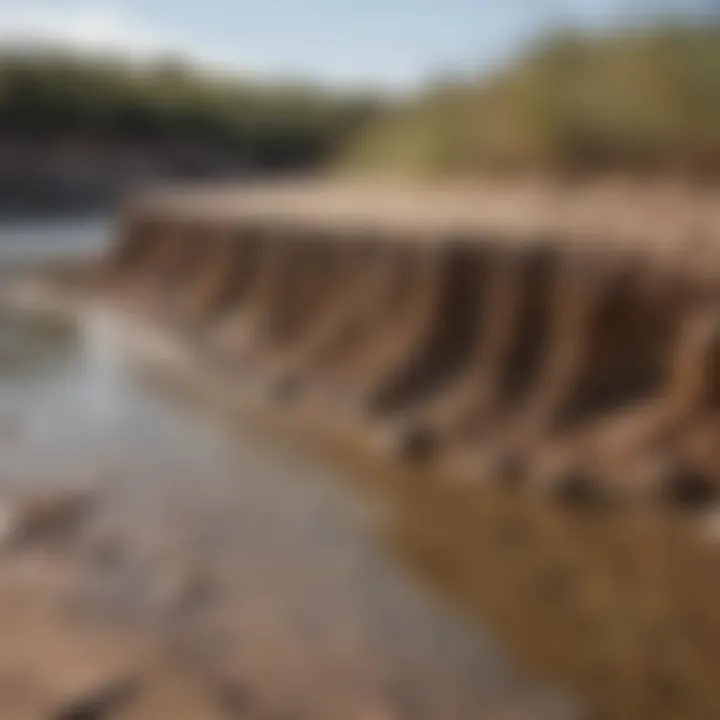
Natural Factors Contributing to Erosion
Wave Action
Wave action is one of the most significant contributors to coastal erosion. As waves crash against the shore, they exert tremendous pressure. The force of these waves can disintegrate rocks and carry away loose sand. This constant movement creates an ever-changing coastal landscape.
The high-energy environment generated by strong waves can rearrange sediment and accelerate erosion. In regions with seasonal variations, such as the Atlantic coast of the U.S., the intensity of wave action can fluctuates. This variability means strategies for combating erosion must be adaptable.
While wave action is often seen as a negative force in the context of erosion, it is crucial for shaping coastal habitats. For instance, the removal of old sand can give way to new, healthier ecosystems in the long term. However, relying solely on this natural process can be risky—the consequences of unchecked erosion may outweigh the benefits of natural sediment redistribution.
Tidal Forces
Tidal forces, driven primarily by the gravitational pull of the moon, also play a significant role in coastal erosion. As tides rise and fall, they can carry sediments back and forth, altering the shoreline. High tides can exacerbate erosion during storms by pushing water farther ashore.
These forces impact not only the physical landscape but also the biological communities that depend on stable coastal environments. When tidal flow is disrupted—be it by infrastructure or other human activities—the natural movement of sediment can lead to unexpected erosion patterns.
Managing tidal influences cautiously is essential for preserving coastal ecosystems. As tides shape habitats, understanding their patterns helps in developing effective erosion control strategies. However, tidal forces can sometimes work against human intervention, complicating mitigation efforts.
Weather Events
Weather events such as storms, hurricanes, and heavy rainfall can have devastating effects on coastal areas. They contribute to erosion by increasing wave heights and altering normal tidal patterns. Particularly during severe storms, the amount of sand displaced can be substantial, leading to acute land loss.
These events often reveal weaknesses in existing erosion control measures, requiring emergency responses. Traditional bulkhead designs may not withstand the fierce conditions wrought by weather extremes. This highlights a need for resilience in design and proactive planning in coastal management.
The unpredictability of weather patterns in recent years—possibly exacerbated by climate change—adds another layer of complexity. Situations have increased where communities must adjust to rapid changes in their coastal environment, making sustainable practices crucial for future developments.
Human Impact on Coastal Erosion
Urban Development
Urban development can both contribute to and mitigate coastal erosion. Infrastructure such as roads or seawalls might provide short-term relief but may ultimately lead to increased erosion elsewhere. When natural habitats are replaced with concrete structures, the natural protective barriers are lost, causing accelerated erosion at adjacent areas.
In many coastal regions, increased impervious surfaces from urbanization lead to greater runoff during storms, further heightening the risk of erosion. This issue also raises public awareness about the importance of integrating natural solutions into development planning. Effective policies need to strike a balance between growth and environmental integrity.
Infrastructure Influence
Infrastructure plays a double-edged sword in the coastal arena. While it can protect coastlines, it can also disrupt natural processes. Dams and levees can trap sediments that would otherwise nourish coastal areas, leading to increased vulnerability elsewhere.
Furthermore, the design and placement of bulkheads must consider their impact on nearby ecosystems. Poorly planned structures can result in localized erosion, fundamentally altering the coastline’s natural trajectory. Awareness of these repercussions is vital for stakeholder discussions surrounding coastal management.
Pollution Effects
Pollution, particularly from urban runoff, can exacerbate erosion by altering the physical and chemical properties of coastal waters. Contaminated sediments can disrupt marine ecosystems, while excess nutrients promote algal blooms that suffocate marine life and disturb natural sediment dynamics.
Pollution ultimately weakens the ecological balance, leading to decreased biodiversity and putting additional strain on erosion control measures. Effective strategies to combat pollution are essential for enhancing the health and resilience of coastal regions. Reducing pollutants in water can prove advantageous not only for marine ecosystems but also for mitigating erosion.
Types of Bulkheads
Understanding the different types of bulkheads is crucial for anyone involved in coastal management, construction, or environmental conservation. Each bulkhead design is tailored to meet specific conditions and needs, which ultimately guides its effectiveness in preventing erosion. The right choice can lead to significant benefits, not just in protecting the shoreline but also in maintaining local ecosystems. It's key to analyze elements like construction costs, resilience, and aesthetic factors when considering bulkheads.
Vertical Bulkheads
Vertical bulkheads serve as a straightforward option for erosion control. They usually consist of solid structures that are built to stand upright, acting as barriers against the forces of water and wind. One of the primary advantages of vertical bulkheads is their simplicity in design and construction.
However, it is important to recognize that while a vertical bulkhead is visually appealing, it often requires stronger materials to withstand hydrostatic pressure. Commonly utilized materials for these structures include reinforced concrete and timber. Although they can be cost-effective, the initial investment might spike due to the need for supporting features like drainage systems.
For many coastal property owners, understanding the long-term maintenance required for vertical bulkheads can make or break their effectiveness.
Sheet Pile Bulkheads
Sheet pile bulkheads are a bit more complex, but they hold their own when it comes to resisting soil and water forces. Made from interlocking steel, vinyl, or composite sheets, they can adapt to various soil types and conditions. Their construction usually involves driving these sheets deep into the ground, creating a continuous barrier.
One significant feature of sheet pile bulkheads is their versatility. Unlike their vertical counterparts, they can be employed in spaces that are hard to reach or where conventional bulkheads cannot be installed. This adaptability can save significant amounts of time and costs during a project, particularly in challenging environments.
Gravity Bulkheads
Gravity bulkheads work on a simple principle: their weight holds them in place against the forces of water. Typically constructed from heavy materials like concrete or stone,'sliding or toppling is generally less risk. Their effectiveness lies in the sheer mass deriding from gravity, which offers a strong line of defense.
However, a gravity bulkhead demands more space compared to other types. The footprint can sometimes limit its application in confined areas. Additionally, these structures need to be designed carefully to handle potential overtopping during storm surges.
When choosing this kind of bulkhead, one should consider the environmental implications as well. Heavy materials may disrupt local habitats and require careful planning.
In summation, the types of bulkheads available provide various avenues for effective erosion control. Yet, weighing the unique characteristics and environmental considerations for each type will lead to more sustainable solutions.
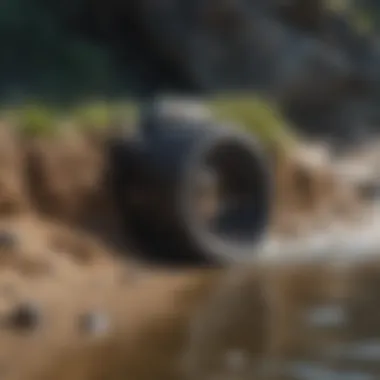

Methods of Bulkhead Construction
Understanding the methods involved in bulkhead construction is essential as it sets the foundation for effective erosion control. The techniques employed not only impact the durability of the structure but also play a significant role in maintaining the surrounding ecosystem. Choosing the right materials and construction methods can mean the difference between success and failure when it comes to protecting coastlines from erosion.
Materials Used in Construction
When it comes to building bulkheads, the choice of materials is of utmost importance. Different materials offer unique advantages and disadvantages, making them suitable for various conditions and requirements.
Wood
Wood, especially treated timber, has been a traditional choice for bulkhead construction. Its natural appeal often blends into coastal landscapes, making it a popular option for homeowners looking to maintain aesthetics. Moreover, wood is a renewable resource, which aligns with sustainable practices.
One unique feature of wood is its flexibility, allowing it to absorb and dissipate energy from waves, which can be quite beneficial in reducing impact forces. However, wood can be susceptible to rot and insect infestations, making regular maintenance a necessity. The longevity of wooden bulkheads can be significantly improved through proper treatment, which affords better resistance to the elements but may still not provide the same durability as some other materials.
Concrete
Concrete presents a robust alternative. Known for its strength and durability, concrete bulkheads are designed to withstand harsh environmental conditions, making them suitable for areas facing heavy wave action. One key characteristic of concrete is its ability to be molded into various shapes and structures, allowing for customization based on the specific requirements of the site.
However, the use of concrete comes with its downsides. While it's strong, it's also quite rigid, which means that it doesn't absorb energy in the same way wood can. This can lead to increased stress in surrounding soil and potentially exacerbate erosion if not properly managed.
Steel
Steel bulkheads are often regarded as the heavyweights in the field of erosion control. Their high tensile strength makes them a top choice for areas needing a resilient barrier against coastal threats. Steel offers a lifespan that can stretch for decades when properly protected against rust and corrosion.
However, despite these advantages, the downside is its tendency to corrode if not treated adequately, especially in saltwater environments. This necessitates the implementation of protective coatings, which can add to construction costs. Furthermore, the installation process can be more complex compared to wood or concrete, requiring specialized equipment and techniques.
Construction Techniques
Once materials are selected, the construction techniques applied are vital for the overall effectiveness of the bulkhead. Attention to detail during this phase can lead to enhanced performance and longevity of the structure.
Excavation and Foundation Work
Before a bulkhead can be constructed, proper excavation and foundation work are critical. This process is not only about clearing the area but also establishing a solid base that can withstand the forces of nature. A well-executed foundation prevents movement and settlement of the bulkhead, which can lead to eventual failure.
The key characteristic of this step is ensuring stability. Foundations can involve various techniques, including driving piles into the ground or using concrete to create a slab. However, this stage can be hindered by environmental conditions, such as water levels or soil composition, which can complicate the excavation process. The advantages include creating a barrier that minimizes undercutting from waves, but the labor-intensive nature of this step raises potential cost concerns.
Installation Methods
Moving on to installation methods, this phase must be meticulously planned. Techniques such as sheet piling, where thin panels are driven into the ground, create a continuous barrier and are favored for their effectiveness in minimizing water flow behind the wall.
A key characteristic of effective installation is ensuring proper alignment and integration with existing shoreline features. Misalignment can lead to vulnerabilities that waves can exploit, ultimately resulting in increased erosion. The advantage of well-planned installation is the enhanced durability and strength of the structure; however, poor installation can lead to significant long-term costs due to repairs.
Finishing and Sealing
The final touches of finishing and sealing are often overlooked but are essential for maintaining the integrity of a bulkhead. This step may include applying protective sealants or coatings that add an extra layer of defense against the elements.
The key characteristic here is to prevent water infiltration and further environmental damage. Various sealants can offer thermal and UV protection, making them beneficial in prolonging the life of the structure. However, the choice of sealants must consider local environmental regulations to ensure compliance. The advantages of finishing and sealing are significant, leading to a considerable extension of the bulkhead’s operational life, although careful selection and application are paramount to avoid unintended environmental consequences.
Environmental Considerations
In the realm of bulkhead erosion control, environmental considerations play a vital role that cannot be overstated. The interaction between coastal structures and their surroundings can be as intricate as a spider's web. Understanding these environmental implications is key for effective coastal management and sustainability. It touches on multiple elements ranging from ecosystem preservation to regulatory compliance.
Impact on Local Ecosystems
When constructing bulkheads, it’s crucial to grasp how these structures affect local ecosystems. For instance, wetlands and intertidal zones act as barriers against erosion and are home to a plethora of flora and fauna. The addition of bulkheads can disrupt these habitats. Species that rely on these environments for breeding or feeding may suffer drastic effects.
- Fish Migration: Many fish species utilize these coastal areas for breeding. Any alteration can hinder their movement, affecting population dynamics.
- Human Interference: Construction activity can lead to sediment disruption, which might result in water quality degradation, impacting not just aquatic life but also the livelihoods of local fishers.
Considering these impacts encourages a more balanced approach, where conservationists, ecologists, and engineers must work hand-in-hand to minimize disruption. Observing the nuances of local wildlife during the planning process is essential to create solutions that are both effective and environmentally friendly.
The preservation of biodiversity can often mean the difference between a thriving shoreline and one susceptible to greater erosion.
Permitting and Regulatory Issues
Navigating the regulatory maze surrounding bulkhead construction and erosion control is often as challenging as building the bulkheads themselves. Every region has its own set of rules and guidelines that dictate what can or can’t be done when it comes to modifying coastal areas. This not only includes federal and state laws but also local ordinances, which often have strict conservation mandates.
Key areas of focus include:
- Environmental Impact Assessments (EIA): Before a single nail is driven, an EIA must often be conducted to assess potential impacts on local ecosystems. These assessments can reveal unforeseen issues and establish guidelines for mitigating them.
- Permit Applications: Engaging with local and federal agencies is mandatory. These permits often require detailed planning, showcasing how projects will avoid harming sensitive areas.
- Compliance Monitoring: Post-construction, ongoing monitoring is sometimes legally required to ensure that the project's impacts are within acceptable limits. A mismatch here can result in severe penalties or even mandatory restoration efforts.
Failure to adhere to these regulations can lead to not just financial losses but also long-term ecological damage. Hence, understanding these permitting processes is just as essential as the technical aspects of bulkhead design and construction.
Challenges in Bulkhead Erosion Control
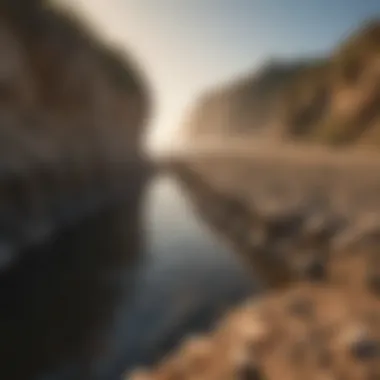

Bulkhead erosion control is integral to preserving coastal areas facing relentless wear and tear from natural forces. However, the journey toward effective implementation is fraught with numerous challenges worth examining. These challenges not only highlight the hurdles faced during construction and maintenance but also underscore the need for strategic discussions surrounding coastal management practices. Understanding these impediments can lead to better solutions, making this topic paramount for anyone invested in coastal conservation and management.
Maintenance and Longevity
The longevity of bulkhead structures is a critical concern in erosion control. Over time, environmental stressors such as wave action and tidal fluctuations can gradually undermine their integrity. Regular maintenance is essential to ensure that these structures remain effective. Here are a few considerations regarding maintenance:
- Inspection Frequency: Routine inspections should be conducted to assess any signs of wear, including cracks or corrosion in materials like steel or concrete.
- Repairs and Upgrades: Swift action on identified problems can often extend the life of bulkheads. Utilizing methods like sealing cracks or applying protective coatings can significantly mitigate deterioration.
- Adaptation to Changing Conditions: As marine environments evolve due to climate change—like rising sea levels and intensified storms—bulkheads may need to be reinforced or redesigned. This forward-thinking approach to maintenance is crucial for longevity.
In practical terms, if a bulkhead shows signs of failure and is neglected, the results can be disastrous, not just for the structure itself but for the surrounding ecosystem. Thus, investing time and resources in ongoing maintenance is an indispensable part of any comprehensive erosion control strategy.
Cost and Funding Issues
Cost can pose significant barriers to bulkhead erosion control projects. Initial construction expenses are just the tip of the iceberg, as ongoing costs must also be accounted for.
- Budget Constraints: Often, local governments or organizations might struggle to allocate adequate funds for bulkhead projects, especially when competing with other pressing infrastructural needs. Given that these structures can be quite expensive, potential underfunding can jeopardize their effectiveness.
- Financial Assistance: Various organizations and initiatives aim to provide support for coastal management projects. Identifying and applying for grants can significantly ease budget constraints. Additionally, collaboration with nonprofits or research institutions can bring in expertise and resources that may offset costs.
- Cost-Benefit Analysis: It is crucial to carry out a thorough cost-benefit analysis before embarking on bulkhead construction. Considering factors such as potential damage from erosion, economic impacts on local fisheries, and tourism can help frame the financial conversation surrounding these projects.
"Effective bulkhead design and maintenance is not merely a cost but a long-term investment in the ecosystem and community resilience."
Case Studies and Real-World Applications
Exploring real-world applications of bulkhead erosion control is invaluable. It provides insights into practical techniques, highlights effective strategies, and showcases the tangible benefits of deploying these structures. Case studies serve as a canvas upon which the theory of erosion control can be observed in action. By analyzing successes and setbacks, stakeholders can better appreciate the nuanced dynamics of coastal management.
Successful Bulkhead Implementations
Successful implementations of bulkheads often arise from well-researched layouts and community engagement. For instance, in the town of Cape May, New Jersey, a combination of gravity and sheet pile bulkheads were installed to combat severe coastal erosion threatening properties and recreational areas. The design incorporated local materials, creating a symbiotic relationship with the environment.
- Community Involvement: The Cape May project involved residents in the planning stages, ensuring that the bulkhead reflected the community's needs while minimizing disruption to local wildlife.
- Monitoring and Adaptation: Post-construction, regular assessments helped adapt strategies based on shifting sea levels and storm impacts. Over the last decade, coastal property losses have significantly reduced in the area.
Another beneficial example can be found in the implementation of vertical bulkheads on the waterfront of San Francisco. These structures not only provided critical protection to businesses along the piers but also integrated green spaces designed to foster local biodiversity.
Lessons Learned from Failures
However, not all endeavors in bulkhead construction turn out positive. Failures often reveal critical lessons that enlighten future projects. For instance, a poorly constructed bulkhead in Long Island, New York faced premature failure due to underestimated tidal forces and wave action. This instance illustrates several key takeaways:
- Understanding Local Conditions: The bulkhead design didn't factor in unique local erosion patterns and tidal dynamics. Accurate site assessments prior to construction should encompass historical data and predictive models.
- Quality of Materials: The choice of subpar materials led to structural compromise. It is paramount to select robust materials that can withstand environmental stresses over time.
- Regular Maintenance: The Long Island case demonstrated the vital importance of maintenance. Neglecting to conduct routine inspections led to unforeseen deterioration and higher costs for repair.
"A lesson from failure often provides more insight than a success. Understanding what went wrong can be as crucial as recognizing what went right."
By analyzing these real-world examples, both successful and not, stakeholders can refine their practices in bulkhead construction, ensuring more resilient and sustainable solutions to coastal erosion.
Future Directions in Erosion Control
As we navigate the ever-evolving landscape of climate change and environmental degradation, the need for effective erosion control becomes paramount. The methods and materials previously relied upon are encountering limitations in efficacy and sustainability. This underscores the importance of exploring future directions in erosion control to not only mitigate current issues but also adapt to future challenges.
Innovative Materials and Techniques
In the realm of erosion control, innovation is the heartbeat that sustains progress. Traditional materials, such as concrete or steel, are increasingly scrutinized for their environmental impact. Therefore, researchers and engineers are turning to alternatives that promise more sustainable solutions.
For instance, biodegradable geotextiles made from natural fibers present a compelling option. These materials not only serve their purpose but also decompose over time, enriching the soil rather than contributing to waste. Another promising avenue is the use of recycled plastics in bulkhead construction. This not only addresses waste management challenges but also provides robust structural integrity.
Furthermore, implementing advanced engineering techniques, like modular design and 3D printing, allows for customized solutions tailored to specific locales. Such innovative approaches can enhance the resilience of bulkheads against storm surges or increased sea levels. By reducing dependency on conventional construction methods, these practices not only improve the longevity of bulkwarks but also lower the overall environmental footprint.
Integrating with Natural Solutions
Integrating engineered structures with natural solutions offers a comprehensive approach to erosion control. Nature has been managing coastal systems for eons, and studying these processes can reveal valuable insights.
Living shorelines, which replace hard structures with natural vegetation and habitats, serve as prime examples. By using native plants and strategically placed rock formations, these systems stabilize shorelines while enhancing biodiversity. Not only do they provide habitat for various marine species, but they also buffer waves, reducing the energy impacting the shore.
Additionally, wetlands and marshes function as natural sponges, absorbing floodwaters and filtering pollutants. By restoring these ecosystems, we can achieve dual benefits: protect the coast from erosion while supporting wildlife habitation. Collaboration between engineers, ecologists, and local communities can make this integration a reality. Therefore, engaging stakeholders becomes critical in advocating for these natural solutions and securing their adoption in future coastal management strategies.
The future of erosion control hinges on our ability to adapt and innovate. Embracing new materials, techniques, and natural partnerships can forge a robust path forward, ensuring resilience against the challenges that lie ahead.
Ending
The conclusion serves as the capstone of an article focusing on bulkhead erosion control, weaving together the essential threads discussed throughout the piece. It underscores the vital role these structures play in maintaining coastal integrity and protecting local ecosystems from the relentless forces of nature. In summary, bulkheads are not merely barriers; they represent a strategic approach to managing erosion and safeguarding resources that coastal communities depend on.
Summary of Key Points
- Understanding the Importance: Bulkhead erosion control techniques are critical in stabilizing shorelines and preventing land loss. These control structures further provide safety to infrastructure.
- Challenges Faced: Despite their effectiveness, maintaining bulkheads poses significant challenges. Aging materials and environmental conditions can lead to deterioration, necessitating routine inspection and maintenance.
- Innovative Techniques on the Horizon: As we move forward, new materials and methods for constructing bulkheads are emerging, focusing on adaptation to environmental changes and minimizing ecological impact. Innovations could include the use of biodegradable materials or natural solutions that integrate with the surrounding ecosystem.
- Sustainability Considerations: It is paramount to approach erosion control with sustainability in mind, recognizing that balanced interventions can aid in preserving coastal biodiversity.
Call to Action for Sustainable Practices
Coastal management requires a proactive stance. Stakeholders, including local governments, environmental agencies, and residents, must come together to embrace sustainable practices. Here are some actionable steps that could be taken:
- Educate the Community: Promoting awareness about the importance of bulkhead erosion control and the significance of sustainable practices can foster a more informed community.
- Implement Eco-Friendly Solutions: Whenever possible, opt for materials and techniques that are environmentally friendly. Utilizing living shorelines or permeable materials can contribute positively to the ecosystem.
- Collaborate on Research: Support and participate in research initiatives aimed at developing effective and sustainable bulkhead solutions. This collaboration can open doors for funding and resources.
- Advocate for Regulatory Measures: Encouraging local authorities to create policies that support sustainable coastal development and erosion control can help ensure long-term benefits.
As we close this discussion on bulkhead erosion control, it's clear that the pathway forward lies in integrating traditional techniques with innovative, environmentally-conscious approaches. By taking these steps, we not only protect our coastal regions but also contribute to the larger goal of fostering a healthy environment for generations to come.
"Sustainable practices are the key to preserving our environments and ensuring their resilience against the forces of change." - Environmental Advocate



